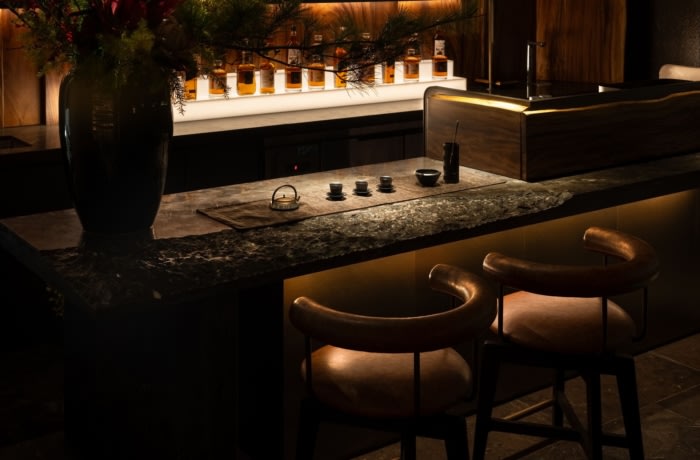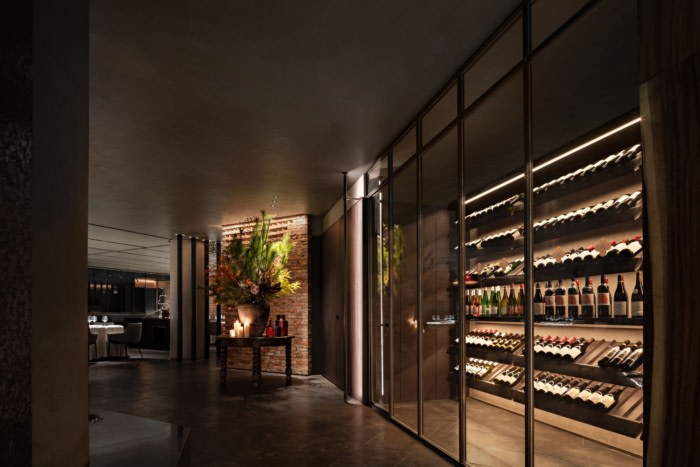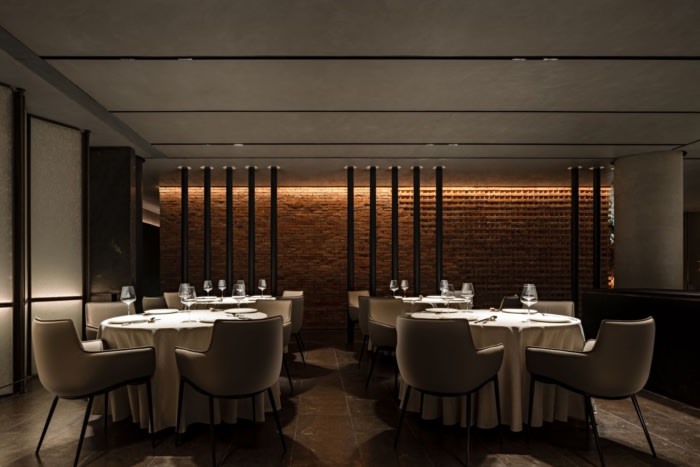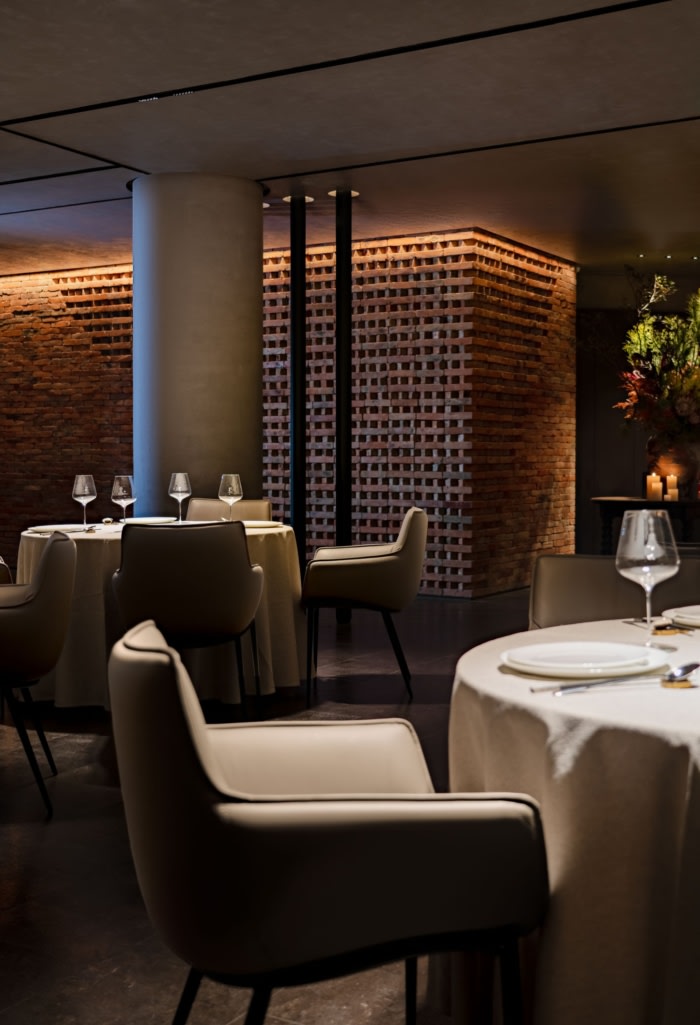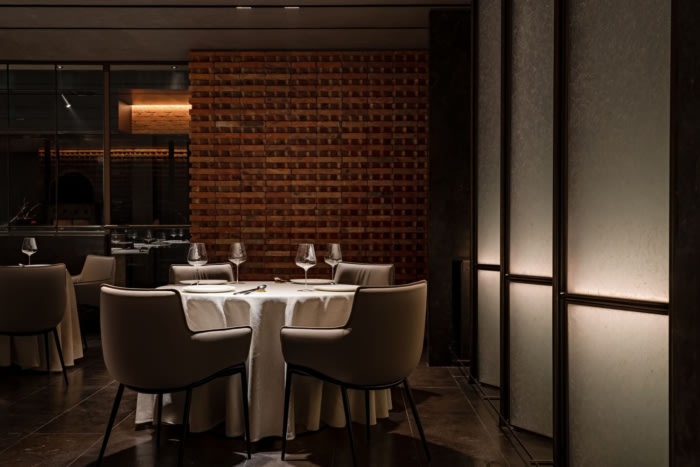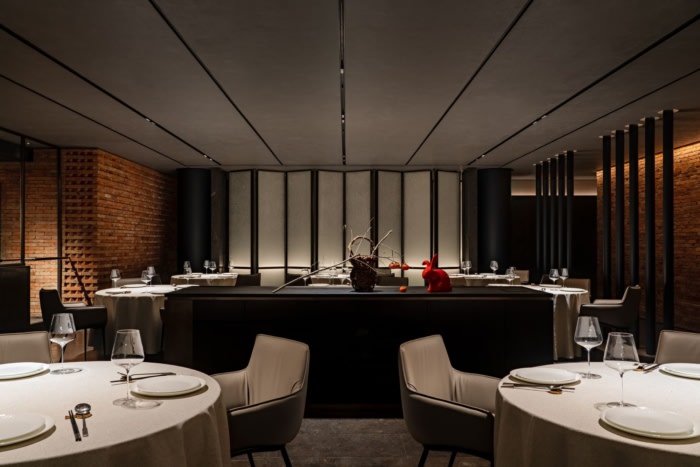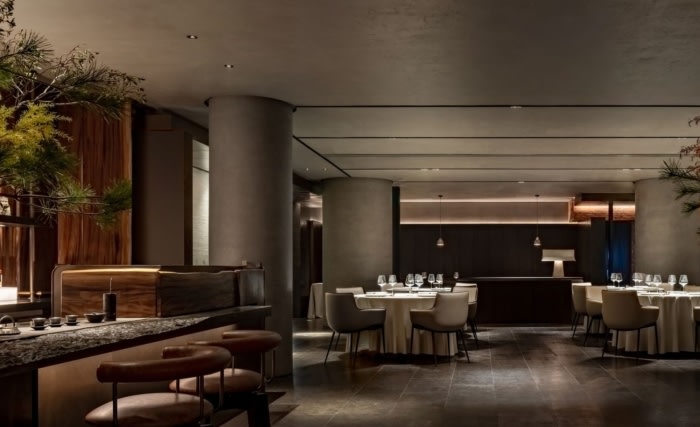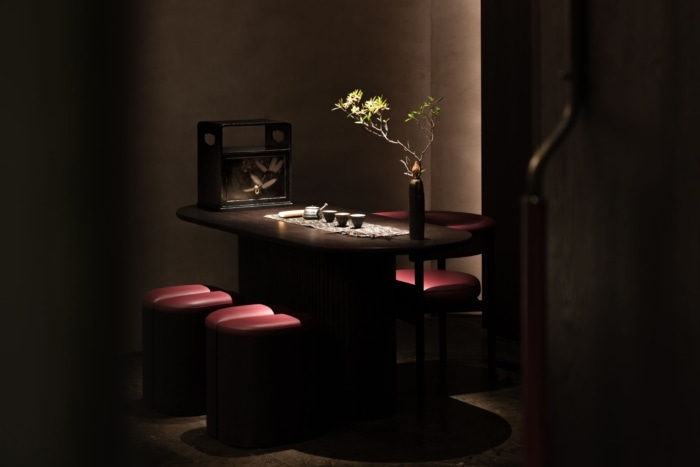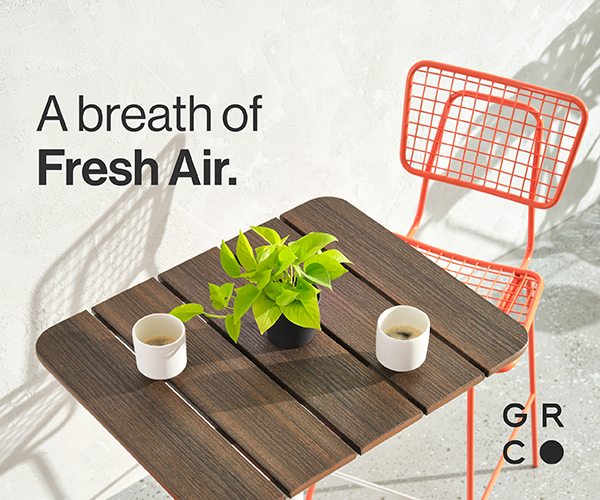Siji Minfu Essence Store at Financial Street
Beijing IN•X Design Co. creatively addressed design challenges at the Siji Minfu Essence Store by integrating nature and cultural elements, and designing immersive atmospheres.
01. Space Creation Method: Leveraging Strengths
Within the Beijing International Finance Center, dining brands are concentrated on the basement level, presenting multiple design challenges—how to address underground lighting issues; how to create a sense of nature, allowing people to relax in the serious and rational financial center; how to integrate Siji Minfu’s cultural DNA with the high-end demands of the business district; and how to create spatial differences among similar brands.
For Siji Minfu, the historical context of Beijing and the bustling city life are endless sources of inspiration. Both Siji Minfu and the prosperous scenes of Financial Street have been refined by time, rooted in the city, and shaped by their respective development histories. While seemingly distinct in their historical and industrial backgrounds, they possess consistency in parallel—historical context, urban elements, era significance, and humanistic texture, all combining to imbue them with greater strength.
Designers integrate the essence of the Essence Store’s commercial attributes into narratives that diverge from conventional ones, further creating a sense of nature within the city to adapt to the characteristics of the business district and its inhabitants. The combination of materials expressing urban fragments with distinct Oriental art greatly expands the dimension of spatial experience: as people dine, the sense of elongated time and rich urban experience momentarily disconnects them from the present, allowing them to truly relax within a vast, objective envelope.
02. A Selection of Time Preserved
“We dwell within it, yet fail to perceive where nature ends and art begins.”
Like projecting a long-lost reel of time, the space sinks into a profound and elegant backdrop, resetting people’s previous spatial experiences from the moment they enter. Amidst gray tones, the ceiling employs lighter grays and earthy colors, while lights trickle down like moonlight, rendering surface textures infinitely varied under gentle illumination. This design compensates for the lack of natural light in the underground space and ingeniously creates a soothing and immersive atmosphere through subdued tones.
Columns, red bricks, gray walls, and screens divide the public areas on vertical planes. Extracted and interpreted from imperial architecture, old residences, and common households, these elements coexist in parallel, overlaying the most distinctive qualities of the city onto the space. They stir up orderly, refined, and warm ripples on the surface of space, spreading from the center of each person’s heart to infinity, collectively composing an inseparable spatial atmosphere. Both traditional and classical reproductions use modern materials and undergo simplification and artistic reshaping in structure and form, enabling elements that are far apart in time and meaning to harmoniously coexist.
Areas such as the bar counter and tea table construct miniature natural landscapes, presenting the vigorous vitality of the northern cold air and the microcosmic gardens of literati studios. These fictitious natural spaces propel diners out of the city and towards nature. Their blank spaces of imagination are closer to the profound and implicit value communication of the Essence Store than meticulously reconstructed landscapes.
Few but exquisite themed prints and plaques of Buddha statues and literati landscapes, akin to opening virtual windows on the facade. Even in the heart of the city, there are moments of mountain light filling the room, illuminating the center of the earth and sky. This is also the broader value pursuit that Siji Minfu has embarked on today, extending from the palate.
Design: Beijing IN•X Design Co.
Design Team: Wu Wei, Jia Qifeng, Liu Chenyang, Zhang Shun, Song Jiangli
Photography: Zheng Yan




